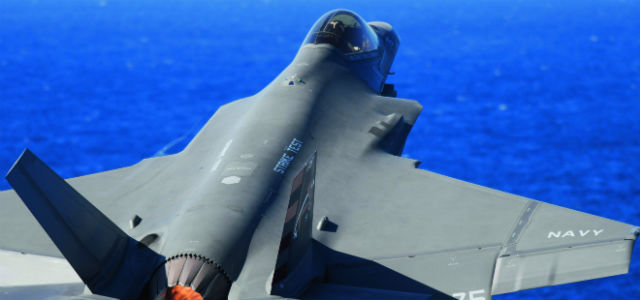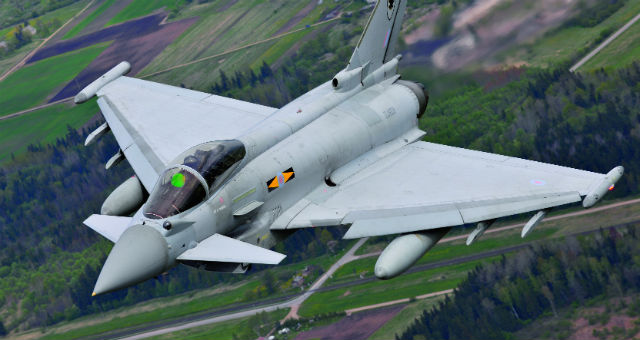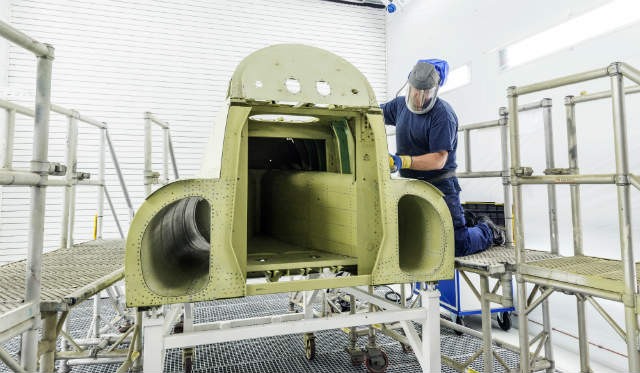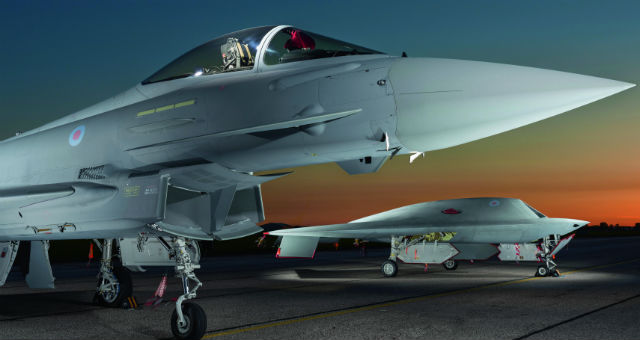As the UK’s largest remaining defence contractor, BAE Systems is in a state of flux, with its domestic market continuing to experience reduced spending, but the need to provide a sovereign capability remaining at a consistent high.
In order to keep a balance between intellectual property retention and revenue making, the company is refocusing the design expertise it has accumulated over decades of providing aircraft to the UK Ministry of Defence to emerging markets that have plans to develop indigenous systems.
“The main challenge we have is to try to work out how to sustain ourselves as a business,” Michael Christie, director of strategy and market development for BAE’s Military Aircraft and Information division, tells Flightglobal.
“There are two parts to sustaining us as a business; there’s the self-centered motivation to keep something within the company, but there is also an element that is about sovereign capability.
“Production continuity is an issue,” Christie notes. “It’s slightly easier to stop production and restart than to stop design and restart it; stopping design – the skills erosion that would happen as a result of that would be hard to regenerate.
“Sustainment of our industry is really about sustaining the design capability, which is significantly harder. It is harder to start up and retain if you have a gap. So when we’re looking at sustainment, we’re looking at how we have continuity in our design capability.”
Ongoing developments within the Military Aircraft and Information division include BAE’s participation in Lockheed Martin’s F-35 Joint Strike Fighter programme, through which it provides the horizontal and vertical tails, aft fuselage and wing tips for every aircraft produced. This gives it responsibility for some 15% of work on the Lightning II.
BAE delivered structures for 44 aircraft – with each consisting of one aft fuselage, two horizontal and two vertical tails – to Lockheed in 2014, and is targeting 48 in 2015. The programme is incrementally ramping up ahead of full-rate production in 2020, at which point 225 F-35s will be built per year. The programme should first hit the 100 aircraft per year target three years from now.
Jon Evans, head of operations for F-35 assembly at BAE, says that 180 aircraft must be built between 2015 and 2018, which equates to the total number of F-35s produced over the past 14 years.
This, he says, demonstrates the scale of production ramp-up that is under way.

US Navy
BAE is currently carrying out its commitment to the JSF programme’s eighth lot of low-rate initial production on a four-day turnaround per aircraft, and the 200th aircraft set is planned to be produced at its Samlesbury site in Lancashire in July.
In parallel to increasing the rate of production, the cost of each aircraft set also has to come down, in order for the Lockheed-led JSF team to meet its target of achieving an airframe unit cost of $65 million for an F-35A by the time full-rate production is achieved. Combined with the aircraft’s Pratt & Whitney F135 engine and other systems, the US joint programme office has set a goal of hitting an $80 million price tag per conventional take-off and landing (CTOL) aircraft by 2019.
BAE has carried its experience in aircraft design through to its manufacture of parts for the F-35, with production tolerances set at within 1,000th of an inch so as to reduce the radar signature of the stealth aircraft, Evans says. This is all done at a consistent 21˚C and is measured to within +/-20 microns, which is the equivalent of a fifth of a human hair.
“It is even more important on the F-35 because it’s designed as a stealth aircraft, whereas the [Eurofighter] Typhoon wasn’t designed for stealth,” Evans explains. “In comparison to the manufacture of Hawk and Typhoon, we’re very automated, although BAE is up-skilling people rather than just relying on technology.”
By its own admission, BAE has gone from being one of the lowest performing suppliers on the F-35 programme to what Lockheed has deemed one of the highest. This is due to a focus on controlling quality, affordability and efficiency.
The F-35 is being manufactured in three variants, and the production line at Samlesbury is designed to deal with all three types.
The CTOL variant is currently the most repetitive, so is the easiest to move down the line as more have been built. BAE is, however, preparing for more work on the carrier variant F-35C – which has a larger and strengthened structure – as more orders for the type are made by the US Navy.
Although its F-35 participation is significant in terms of revenue and international exposure, Christie explains that from a design retention perspective, it is not going to make much of a contribution to adding to BAE’s skill set.
“F-35 – that sustained some capability, but it was focused on a few areas and you need to sustain all of the skill sets,” he says. “And then that has an impact on sovereign capability – if the customer has a problem in a particular area you might just need every single skill set at some point.”
The company is also carrying out a series of upgrades on the Typhoon, for which BAE is one of three industrial partners in the Eurofighter consortium, along with Airbus Defence & Space and Alenia Aermacchi. The programme is now entering its final Tranche 3A delivery phase, with fresh export sales needed to sustain it further.
“We are at the stage at the moment where we’re developing the design on Typhoon, the design of which we started back in the 1980s, and if we had to design a new aircraft – be it a UAV [unmanned air vehicle] or manned aircraft – we’d have to bring to bear all of that skill from the 1980s.”
In February, Eurofighter nations Germany, Italy, Spain and the UK signed a contract worth some €200 million ($218 million) for a Phase 3 capability enhancement (P3E) package, intended to strengthen the type’s multirole credentials.

Crown Copyright
One of the key elements of the work will be the full integration of the MBDA Brimstone 2 air-to-surface missile for the UK Royal Air Force.
This particular piece of work was contracted at a value of some £72 million ($109 million) to BAE, which completed a feasibility trial linked to the enhancement in 2014.
Other elements of the P3E package include avionics upgrades, improvements to the Typhoon’s mission system and maintenance equipment and capability enhancements related to its use of other weapons. These include MBDA’s Meteor beyond-visual-range air-to-air missile and the standoff-range Storm Shadow cruise missile.
Full integration of the Brimstone 2 will enable the Typhoon to carry six of the weapons, which will be integrated using a pair of three-round launchers. The P3E standard is scheduled for delivery during 2017, with the upgrade “expected to be delivered into RAF service in late 2018”, the UK Ministry of Defence says.
Last November, meanwhile, the Eurofighter partner nations agreed to support the development and integration of an active electronically scanned array (AESA) radar for Typhoon. The Euroradar consortium’s Captor E-Scan will be incorporated under a €1 billion deal.
Until the point of contract, Euroradar partners had self-funded AESA development activities, including the installation of a Radar 1+ sensor and array repositioner in BAE’s instrumented production aircraft IPA5, shortly before the Farnborough air show last July.
After making a show appearance, the radar was returned to Selex ES – one of the Euroradar partners – for the company to check its installation and additional power and cooling system performance.
BAE says that radiation hazard testing for the new radar is currently under way at its facility in Warton, Lancashire using a Tranche 1 Typhoon aircraft. It will then be returned to Edinburgh in Scotland, and should be flying by the end of 2015. BAE has modified the front and rear fuselage of the test aircraft so that it can carry the E-Scan radar.
Ahead of the release of the UK’s new Strategic Defence and Security Review (SDSR) later this year, BAE is looking towards any sign of a big programme from the MoD.
“From a defence industry perspective, budgetary constraints in the UK and USA have required us to make significant changes to drive new efficiencies, which often leads to the need for tough decisions about our domestic footprint,” BAE chief executive Ian King said during a Chatham House gathering in February.
“The [SDSR] review provides a timely opportunity to consider the UK’s defence and security requirements today and into the future. For industry, including my own company, decisions in the 2010 review led to painful adjustments, affecting the lives of many of our employees,” King says.
“But it also gave us clarity, and more certainty for the following five years, including commitments to a number of major, long-term programmes that we are actively engaged on today.”
King says that among arguments about defence spending, “it would be a mistake to assume the British public did not care about how we see Britain’s place in the world”.
“As an absolute minimum we should be able to say that the UK customer is incredibly happy with what it’s got,” Christie says, claiming that just because the market is moving towards international deals, it does not take BAE’s focus away from its home customer and making sure it is happy with its fleets.
“We’re still very much dependent on the brand of the RAF. We work very closely with the RAF, and that brand of the RAF – whether it’s the aircraft or the quality of the training that they provide – that is something we take to the market, and it’s still a massive discriminator for us.”
However, one of the key business concerns for BAE is collaboration, because it “will not stand alone” and has to be more internationalised. This, Christie says, comes in varying degrees, and some nations will more likely be design partnerships, while others will be supply chain partnerships.
“All of our potential Middle Eastern customers are likely to be similarly demanding – they are going to want industrialisation. We’re having to look at the shape of our supply chain going forward.”
India is a good example of a market that BAE is moving further into, because it has the budget, but also a “bigger desire to indigenise the capability”.
Turkey and the United Arab Emirates are other examples of growth markets, as they are countries with available budgets and a desire for industrial growth.
“We’re looking to be excellent at doing that industrialisation, just as we are at making aircraft,” Christie says. “We’ve moved away from the days where offsets were something you had to do just to get the contracts. It is now part of the requirement – we have to think of industrialisation even before we think of the aircraft.”
Currently, 40% of BAE’s business comes from the UK, with the rest coming from export activities, primarily from Saudi Arabia.
“As you go through the five- to 10-year plan, the UK goes down closer to 25%,” Christie says. “Saudi remains large, but overall we have to generate significant new customers internationally.
“Predominantly that will be the Middle East. India will also be a big part – although at the moment it is predominantly Hawk, it is still a very big market for us.
“A lot of our long-term strategy is about how we find a long-term industrial partner in-country and develop and become an in-country entity,” he says. However, the “UK is still absolutely key in terms of maintaining and regenerating intellectual property”.
BAE is looking to India to see where sales for its Hawk advanced jet trainer will go.
During last month’s Aero India show in Bengaluru, discussions took place between the company and Hindustan Aeronautics (HAL) to identify what further work can be done in-country.

BAE Systems
The Indian air force has operated the Hawk since 2008, following an initial order for 66 signed in 2004. This covered 24 aircraft to be built in the UK and 42 licenced to India for assembly by HAL.
A second contract, for 57 aircraft, was agreed on for the air force and navy in 2010, and BAE is in negotiations for a further 20, which would be used to equip the air force’s Surya Kiran aerobatic display team.
The key discussion remains around how to develop Hawk further in the region, and then work in partnership with HAL to sell more of the type, Christie says. The Indian company also used the Bengaluru show to reveal details of a cockpit upgrade for the trainer.
Also last month, Northrop Grumman announced that it had opted to offer a clean-sheet aircraft for the US Air Force’s T-X trainer programme, rather than a modified version of the Hawk that it had originally planned to pitch in conjunction with BAE.
Development of the new aircraft by its Scaled Composites unit was already under way at the time of the revelation, with Northrop saying it would fly the new aircraft by the end of 2015.
“The Hawk is a tremendous airplane,” Northrop said. “However, we decided as a team to offer a new design as the US Air Force continued to mature their requirements.”
BAE says it remains in discussion with Northrop about its role on the T-X programme. Where it will fit in with the new aircraft remains to be seen, but it is offering to supply equipment including the embedded simulation capabilities already operational with the RAF’s Hawk T2 fleet.
Both the Hawk and Typhoon programmes, meanwhile, serve as examples of BAE trying to keep its design work fresh.
“The business strategy in the short to medium term is to generate revenue by selling Typhoons and Hawks. With both of those it does retain a level of design, because there is a lot of upgrade and sustainment work, particularly with Typhoon,” Christie says.
“Similarly, Hawk keeps going through iterations of design – although not quite to the same scale as Typhoon – but what that doesn’t do is sustain the total aircraft design capability.
“Part of the key is the big strategy, which is growth in the international market,” he adds. “At a minimum it brings revenue, which keeps us live as a business, but as a maximum it brings us design work, because there are a number of countries where we’re trying to develop collaborative efforts. The obvious one is France, where we are collaborating on UAVs and UCAVs [unmanned combat air vehicles] in particular, and this is the model that we have followed for some decades now.”
BAE signed a contract with Dassault and the French and UK governments last November to conduct the air vehicle element of a feasibility study for a Future Combat Air System (FCAS).
Once the study is submitted at the end of 2016, a development effort leading to a demonstrator build and flight-test campaign is expected, although this was not given as a guaranteed commitment.
If the programme continues as expected, FCAS should come to fruition with a new capability by around 2030, the countries’ procurement agency leads say. It is expected that experience from BAE’s Taranis UCAV demonstrator development with the UK MoD will contribute to its technology share during the two-year feasibility study phase.
“In partnering with France we have a partner with a very similar goal and a similar approach,” Christie notes. “In the short term I think France will be a key collaborator.”
Although BAE is involved in two UCAV demonstrator efforts – Taranis and FCAS – Christie notes that the restrictions surrounding the international Missile Technology Control Regime (MTCR) could prevent any commercial development and export of this kind of technology for all signatories of the treaty.

BAE Systems
Beyond the collaboration with France, Christie says BAE is “trying to work on a longer-term export strategy, so that if we do develop unmanned systems, we don’t end up with a very limited run. We want to be able to take them into the broader market, because it is a more limited market than the manned one. We’d like to develop a product that we could take externally.”
Christie stresses that the company advocates the export potential of developing a system from the outset, because “you have to think about export all the time and how you internationalise the product. I certainly envisage [unmanned] vehicles that could be exported, but it comes down to trying to match that to the military requirement of the UK”.
While the UK government supports Taranis as a demonstrator, it is not something that BAE could commercialise and sell, he says. “The final operational vehicle – which the two-year Anglo-French FCAS feasibility study will determine – what is that final operational vehicle, and is it exportable?”
With regard to bringing a medium-altitude, long-endurance (MALE) UAV to market, Christie notes that the competitive landscape is very different to that for a UCAV.
“We’re sitting in a slightly different place [to Europe]. The MALE UAV market has a much lower barrier to entry than the UCAV market, therefore there are lots more players. The key to success in that market is how you do it, not what the vehicle is, and that goes back to collaboration.
“We would want to collaborate in this and find customers that want us to do it with them. It’s difficult to say ‘I’m the best’. The most successful is the first to market.”
Christie says there is no benefit in simply adding another product to an already saturated market, and notes that the USA and Israel are already very “successful and aggressive” in the MALE UAV sector.
Source: Flight International



















